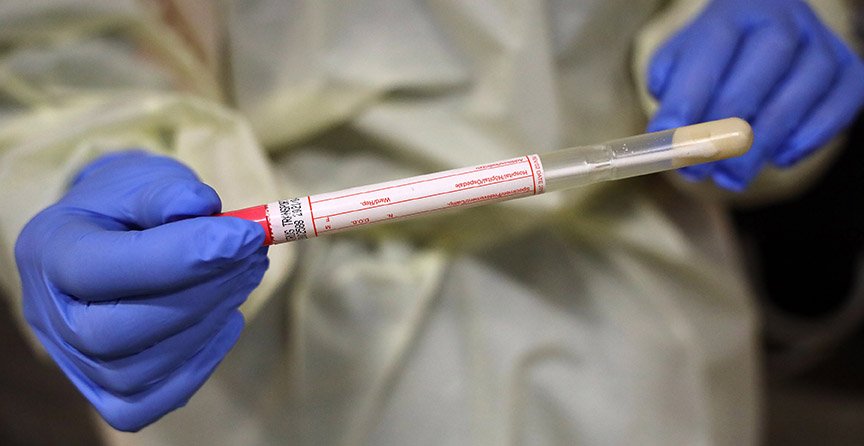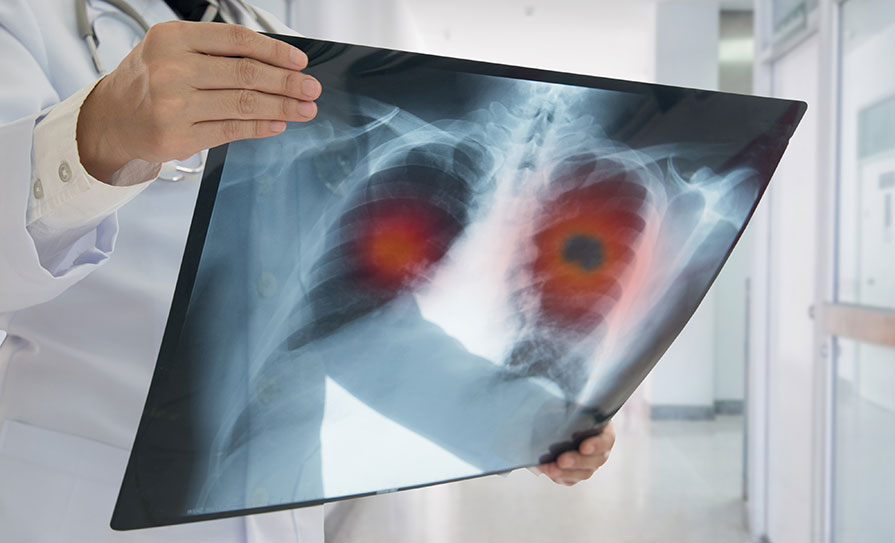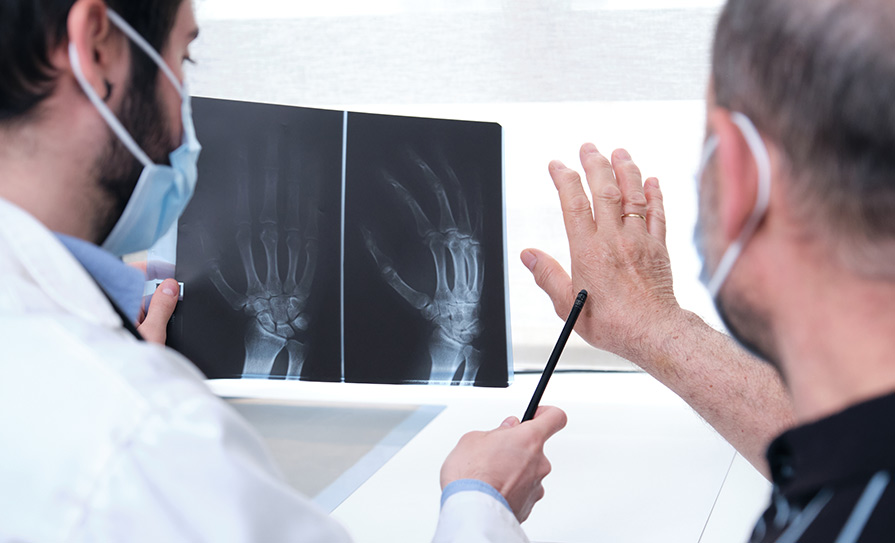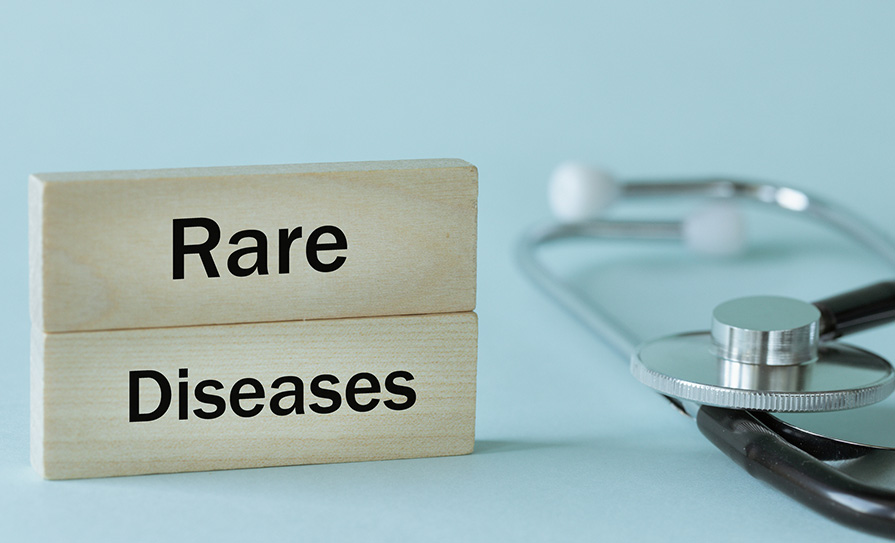Director of the National Virus Reference Laboratory Dr Cillian De Gascun tells Niamh Cahill he has no doubts about the effectiveness of the reverse transcriptase-polymerase chain reaction (RT-PCR) test to detect SARS-CoV-2
As the information overload surrounding the novel coronavirus continues, many myths and untruths have emerged.
This is being fuelled by the fact that much remains unknown regarding Covid-19.
One of the ‘fake news’ stories to appear in recent times surrounds the swab test used to detect the virus.
According to Dr Cillian De Gascun, Consultant Virologist and Director of the National Virus Reference Laboratory (NVRL), University College Dublin, any suggestion that the reverse transcriptase-polymerase chain reaction (RT-PCR) test is inadequate are “inaccurate”.
HIQA recently published a rapid health technology assessment of alternative diagnostic testing methods for detecting Covid-19, as requested by the national public health emergency team (NPHET).
Before these tests can be adopted as part of a national testing strategy, they will need to be independently clinically validated, locally verified, with ongoing review as part of a comprehensive quality assurance programme. The current test, real-time RT-PCR, remains the ‘gold standard’ test for detecting and confirming Covid-19 cases, according to HIQA.
The test used to detect the virus is an “incredibly sensitive diagnostic method” and claims regarding lack of sensitivity are “irresponsible”, Dr De Gascun told the Medical Independent (MI) in an exclusive interview.
He dispelled suggestions that the RT-PCR swab test for Covid-19 had, at best, a sensitivity or detection rate of 70 per cent, labelling the view as “inaccurate”.
“This arbitrary notion that it [test] is between 35 and 70 per cent… in essence, it’s irresponsible,” according to Dr De Gascun.
“It’s an incredibly sensitive diagnostic method. It is capable of detecting fewer than 10 copies of a particular pathogen in one millilitre of fluid. This is the same technology we use to monitor people with HIV infection, or hepatitis C infection, the same technology we use to diagnose influenza.”
The test employs highly sensitive technology and is the “gold standard”, he added.
The large viral load present in those with symptoms of Covid-19 is a key factor that assists in testing for the virus.
“At the time of the onset of symptoms, the viral load is huge. So the amount of virus present at the onset of symptoms is massive. We’re seeing viral loads in the region of one million, 10 million, 100 million,” said Dr De Gascun.
Furthermore, in the 24 hours before the onset of symptoms, “there is a huge amount of the virus there”.
Lower respiratory tract
However, in a small number of cases, among those who present late to hospital with Covid-19, the virus may no longer be identifiable in the upper respiratory tract, he said.
“If people need hospitalisation and they’ve got pneumonia, by the time they seek medical care, the virus may no longer be detectable in the upper respiratory tract.
“What we do for testing people is, we take a swab from the nose and throat. In the majority of [positive] individuals, the virus is there in significant amounts. However, we’ve seen a couple of cases where people have been quite sick in hospital, have had pneumonia and it seems that as the disease progresses, the virus may no longer be detectable in the upper respiratory tract, but it’s present in the lower respiratory tract in the lungs.
“This is a new disease and we are still learning, but what we believe is that the virus is progressing to the lower respiratory tract, causing pneumonia and then there is no replication in the upper respiratory tract.”
A cough, for example, is a lower respiratory tract symptom, he said. That is why in order to exclude the infection in a person, ideally, samples from the upper respiratory tract and the lower respiratory tract would be taken.
Tests currently being undertaken in the community take samples from the nose and throat only, however, as lower respiratory tract testing is “not feasible” in this setting, according to Dr De Gascun.
This means that the virus, once present in the upper respiratory tract, may no longer be detectable there as the virus progresses, which could result in patients with the virus receiving a ‘negative’ test result.
“Therefore, people jump on this idea that the test isn’t sensitive; that’s not the explanation. If the virus isn’t present in the upper respiratory tract, it’s not a sensitivity issue; it can’t detect what’s not there.”
The preferred sample type for the virus is cellular samples from the lungs, lower respiratory tract samples, either sputum or secretions from inside the trachea, he said.
“If somebody is intubated and on a ventilator, you can inject fluid and suck it out again and find the virus in that material from the lungs. That’s the best sample type for these patients. But obviously, we’re not going to do that for the community, so there’s a question of what’s acceptable, what’s feasible and also what the preferred sample type is.”
Quality
The other element to consider, he advised, is the quality of the sample received. If a “proper sample” is provided, the sensitivity is very high, according to Dr De Gascun.
“Ideally, what we want to get in the sample we’re receiving is cellular material, so it shouldn’t be painful, but it should be uncomfortable to take the swab, and that’s what we want. Certainly in some of the samples we’re receiving, I think there is a quality sample issue.”
Another reason why inaccurate reports surrounding the ability of the test to detect the virus have emerged, he said, was due to the fact that demand for Covid-19 testing is impacting on testing for “everything else”.
“We are not testing for the normal respiratory viruses that are circulating at this time of the year. People get symptoms and they assume they have Covid-19. They get a negative test and then they say ‘oh, the test is wrong, I’m sick’. We’re not saying you’re not sick. What we’re saying is that you don’t have Covid-19.
“In influenza season, what normally happens, we’ll say ‘you don’t have flu, but it’s one of these other respiratory viruses’. Whereas at the moment, all people are getting is, ‘you have SARS-CoV-2′ or ‘you don’t have it’ and the problem is then those people who don’t have it blame the test because they don’t get an alternative diagnosis.”
Streamlining
Efforts are now underway to streamline the entire testing process, Dr De Gascun told MI. More than a few bumps on the testing pathway have emerged in recent weeks, but delays have now abated.
The four pillars in the process are: GP referral; sampling at community hubs; lab testing; and communication of results followed immediately by contact tracing.
“Initially, there was a problem with getting the swabs for the community sampling hub,” explained Dr De Gascun.
“That problem protected laboratories a little bit. When the swab issue got sorted and the GP referral issue got sorted, then the laboratories became the bottleneck. With the laboratories not having sufficient capacity, it made little sense bringing people in at the front end of the process, through the GP, through the hubs. If you couldn’t get through the laboratory, you were just creating a larger delay and larger backlog.
“Given the reduced capacity in laboratories, we were prioritising hospitalised patients and healthcare workers so, therefore, the community samples weren’t really getting a look in and they weren’t going to get a look in until we had more lab capacity on stream.”
This led to delays of more than three weeks in patients receiving results. Furthermore, many patients have learned of their test result from their GP, and not public health, illustrating delays in contact tracing.
Herd immunity
Much has been said about the concept of ‘herd immunity’ during the pandemic.
The term generally refers to a large proportion of a population that is immune to contracting disease, usually through vaccination.
In the context of Covid-19, it has been suggested by some that ‘running it through the herd’ will help to increase immunity to the disease, and therefore benefit the population.
There are a number of problems with this proposal, not least the fact that it is not yet known definitively whether those who have had Covid-19 are subsequently immune to getting the virus again.
According to Dr De Gascun, herd immunity “is not a strategy”.
“Ultimately, we do want to get to a place where a large proportion of the population is immune, because that means the virus lacks susceptible hosts to infect and, therefore, in essence, will hopefully peter-out.
“Ultimately, do we as a society need to get to a situation where there’s a level of population immunity that prevents the virus circulating rampantly? Yes, we do. But ideally, we would get there with a vaccine.”
Even if the elderly population alone was “cocooned”, the numbers affected by the virus “would still overwhelm our health system and ICU”.
“We can’t operate on the basis of, ‘sure, let’s give it a lash and see what happens’. The luck of the Irish isn’t getting us through this one. Some people don’t seem to realise that.”
Ultimately, herd immunity is not a strategy, but a point we hope to get to, he said.
As other countries, such as Sweden, operate more liberal strategies in response to the virus, this has raised questions about the Irish response. Are we being too cautious? Dr De Gascun does not believe so.
“If people come back to me in two years’ time and say, ‘you were too cautious’, I will happily take that. I will put that on my tombstone.
“This is unprecedented in our lifetime. We will be analysing this for decades. One of the reasons I did virology was because of the 1918 Spanish flu. People will be talking about the 2019 coronavirus pandemic for decades.”













Leave a Reply
You must be logged in to post a comment.